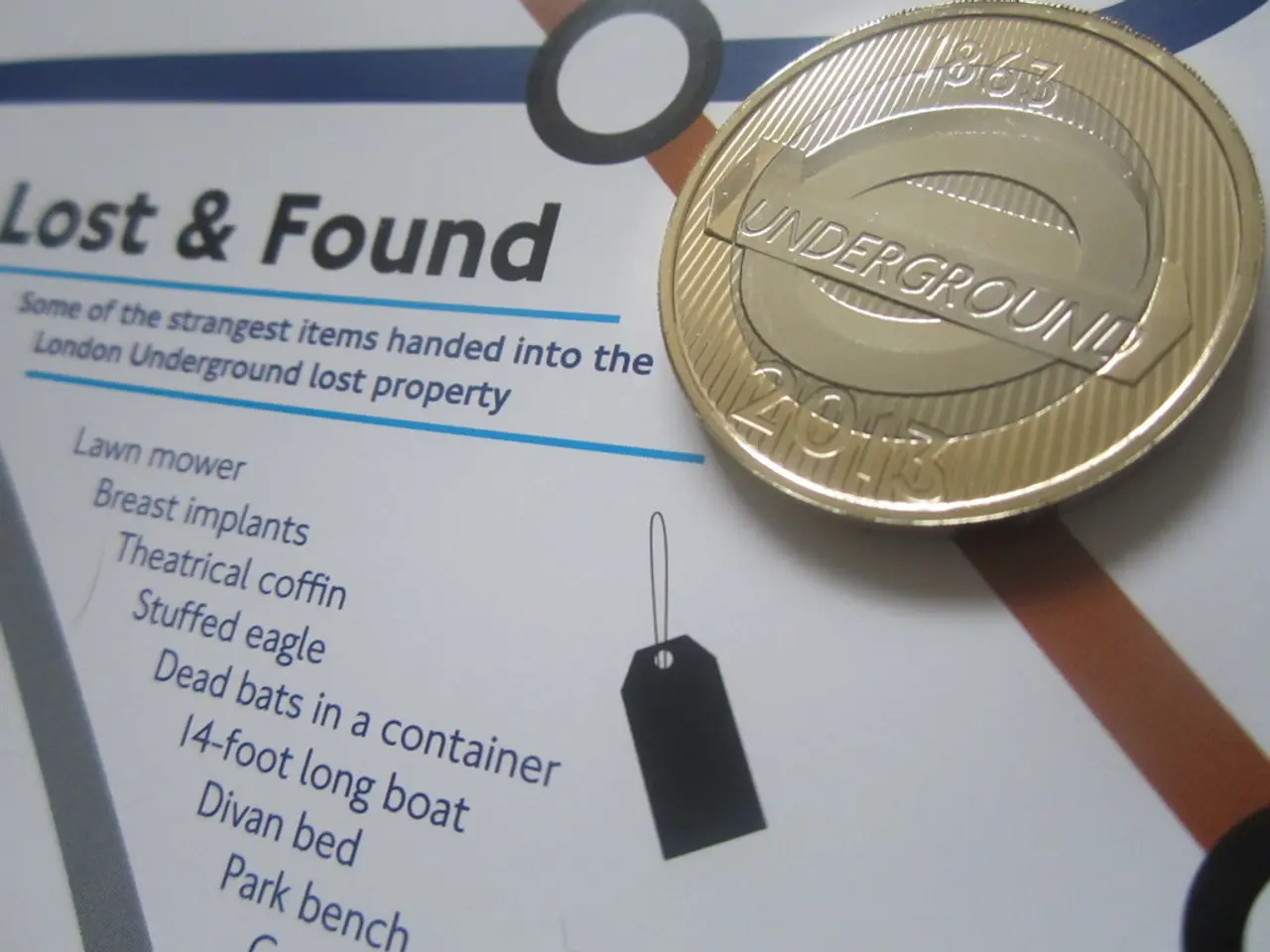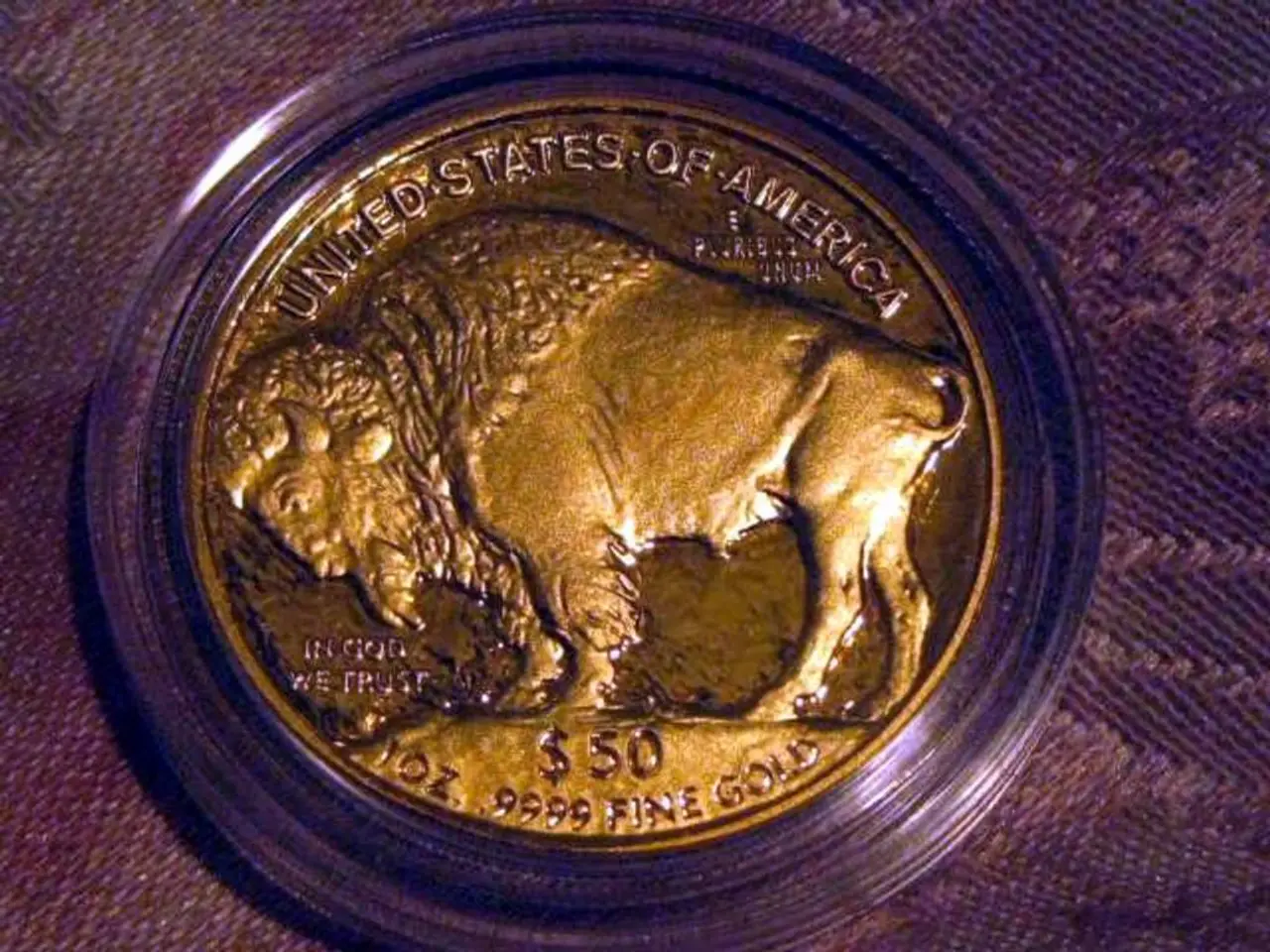Swiss National Bank Puts Rates at Zero, Signals Possible Negative Rates Ahead Amid Low Inflation
Swiss Central Bank Reduces Rates to Zero, Leaves Possibility of Negative Interest Rates Open
In a surprising move, the Swiss National Bank (SNB) slashed its interest rate to 0% on Thursday, flirting with the idea of venturing back into negative territory if the economic climate worsens. Although the central bank acted with caution, stressing that such a drastic move would come with undesirable side effects, it's now possible that borrowing costs might dip below 0% again.
Markets are anticipating another rate cut by September with a 53% probability, assuming the economic outlook turns sour. Chairman Martin Schlegel concedes that cutting rates further would be a significant step. "As a central bank, you can never exclude measures, but the hurdle is higher now," he told reporters.
The SNB trimmed its policy rate to get inflation back within its 0-2% target range and counter modest inflationary pressures expected ahead. Despite the unpopularity of negative interest rates among banks, savers, and insurance companies, the SNB has hinted it might reconsider the measure if necessary, albeit reluctantly.
The Swiss franc, initially strengthening after the decision, remained steady on the day against the dollar at 0.8191 francs. The central bank's sixth consecutive rate cut came after Swiss prices fell by 0.1% last month, marking its lowest reading in four years.
The SNB's baseline scenario outlines weakening global economic growth and rising U.S. inflation in the forthcoming quarters. In Europe, it predicts decreasing inflationary pressure. The central bank warns that uncertainty remains high due to potential trade barriers that could slow the global economy further.
On a busy day for central banks, Norway's central bank surprised markets with its first rate cut in five years, while the Bank of England kept its interest rate unchanged. The U.S. Federal Reserve held its rates steady but hinted at potential rate drops later this year, and the European Central Bank lowered its interest rate by 25 basis points earlier this month.
Not everyone agrees that negative interest rates are inevitable. EFG senior economist GianLuigi Mandruzzato believes the SNB will stop at zero unless there's a substantial downturn in the Swiss economy, triggered by escalating U.S. tariffs. However, many analysts, like Charlotte de Montpellier from ING Bank, maintain that another rate cut is likely, especially as deflation appears more persistent than initially anticipated by policymakers.
The SNB's two-year bond yield remains in negative territory, signaling that markets expect interest rates to drop below 0% in the upcoming months. The SNB has been struggling with a robust Swiss franc, which has gained roughly 11% against the dollar in 2025, cooling inflation by lowering the cost of imports. In response, the SNB has intervened in foreign currency markets to maintain inflation levels[1][2][3].
Swiss Economy Facing Mild Deflation
Switzerland's economy is experiencing mild deflation, with consumer prices falling by 0.1% year-on-year in May 2025[1][3]. This decline is broad-based, affecting transport, food and non-alcoholic beverages, healthcare, and household goods and services, indicating fragile domestic demand[1][3]. Market expectations and expert analyses suggest that the SNB could return to negative interest rates later this year, potentially lowering rates to around -0.25% by September through successive cuts[1][3]. Futures markets suggest approximately a 25% probability of negative rates before the end of 2025, either through a larger cut in June or additional rate reductions after summer[3].
Factors Affecting SNB's Stance
The decline in headline inflation to below zero and low core inflation makes it challenging for the SNB to meet its inflation target of 0% to 2% annual inflation[1][3][4]. Persistent deflationary pressures undermine economic growth and domestic demand. Despite the weak inflationary environment, the Swiss economy has shown some resilience and growth above expectations in early 2025, which moderates the urgency for negative rates[3]. Public opinion in Switzerland is unfavorable towards negative interest rates, impacting the political and social acceptability of such a policy move[3].
Looking Ahead
While the SNB has not yet returned to negative interest rates, it has moved closer by cutting its key policy rate to zero. Multiple signals, including deflation and inflation undershooting forecasts, make a return to negative rates increasingly likely in the near future. However, economic resilience and public sentiment may delay or temper this shift[1][2][3][4]. Taxpayers will likely want to stay abreast of the situation, as the SNB's monetary policy decisions can have significant implications for the Swiss economy and financial markets.
[1] [Investopedia] Swiss National Bank (SNB)
[2] [CNBC] Swiss National Bank cuts interest rates to 0%, considering negative rates
[3] [Bloomberg] Swiss National Bank May Return to Negative Rates as Economy Softens
[4] [Reuters] Swiss central bank cuts interest rates to zero, shrugs off rise in inflation
[5] [Swissinfo.ch] Switzerland is again edging closer to outright deflation
[6] [The Local] Swiss central bank lowers interest rates again but hints at the end of easy monetary policy
- The Swiss National Bank's (SNB) decision to slash interest rates to 0% signals a possible return to negative rates in the future, with markets anticipating another rate cut by September.
- The SNB's move is aimed at countering mild deflation in the Swiss economy, where consumer prices have been falling for several months. The decline in consumer prices affects various sectors, including transport, food, healthcare, and household goods.
- If the economic outlook worsens, the SNB might reconsider negative interest rates, as it did in the past, despite its unpopularity among banks, savers, and insurance companies. The central bank's two-year bond yield is currently in negative territory, signaling that markets expect interest rates to drop below 0% in the upcoming months.
- While the SNB has not yet returned to negative interest rates, its stance is influenced by factors such as persistent deflationary pressures, low core inflation, and the weak inflationary environment. Economic resilience and public sentiment may delay or temper a shift towards negative rates, but multiple signals make such a move increasingly likely in the near future.






